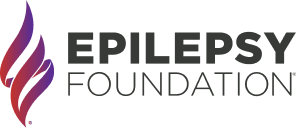Using Seizure Diaries

How do I use seizure diaries? Which one should I use?
Tracking seizures and other information can be done in many ways.
- The diary or calendar should be easy enough so you can use it on a regular basis – every time you have a seizure.
- It should be one that you can easily share with your doctors, nurses, and other caregivers if needed.
- Since many people don’t know what happens during their seizures, diaries should be available for others to write down what they see as well.
Examples of Seizure Diaries
Some people like to write in a journal, while others like forms that can be easily copied. Computers and other technology may let you record seizures on your computer, phone or other electronic device. Seizures can be tracked on a calendar – these make it easy to see when they occur and track patterns. Or use a log or record – these let you write more details about individual events.
"The key is to find one that works for you!"
Below are a few types to try.
Seizure Diary Apps
Whichever method you choose to track your seizures, we recommend that you select something that you know you will consistently update. A seizure diary app is convenient for many people to use when on the go. With a seizure diary app, you or your caretaker can:
- Log auras, seizures, and side effects with a few clicks
- Track your meds and receive reminders
- See your progress over time
- Get customized content relevant to your symptoms
- Stop worrying about remembering details at your next appointment
Think of seizure diary apps as your personal health assistant, making sure you stay on track.
Seizure Tracker
Another online seizure diary that lets you track seizures electronically, in this tool you can add videos of seizures and share your information with others.
My Seizure Event Diary
This paper calendar allows people to record details of what happens during a seizure. This can be helpful for people with more than one type of seizure or when more information is needed to diagnose the type of seizure. When more than one person may be observing and recording seizures, the event diary can be easier to use.
Seizure Calendar
A paper monthly calendar is good to record how often seizures occur. They can be used to track seizures in relation to time of menstrual cycle (for women) or other triggers that may affect seizures. If a person has more than one type of seizure, they can label seizures by letter to make recording easier.
Special Instructions
- Seizure diaries can be used for different purposes. Sit down with the doctor and nurse to find out what information is most important for you to track What would help your health care team, and what info do you need?
- When tracking your seizures while your medicine or treatment plan is being adjusted, make sure you write down when medicine changes are made!
- To see if "as needed" medicines or treatments are helpful, write down when they are used and if they worked as expected.
- To see if triggers or patterns are present, decide what factors you are interested in and write down when they occur.
- To monitor side effects of medicines or changes in mood, write down if these are present and when they occur (time of day is important too!).
More Tools
Find more resources in our Toolbox:
Resources
Epilepsy Centers
Epilepsy centers provide you with a team of specialists to help you diagnose your epilepsy and explore treatment options.
Epilepsy Medication
Find in-depth information on anti-seizure medications so you know what to ask your doctor.
Epilepsy and Seizures 24/7 Helpline
Call our Epilepsy and Seizures 24/7 Helpline and talk with an epilepsy information specialist or submit a question online.
Tools & Resources
Get information, tips, and more to help you manage your epilepsy.





